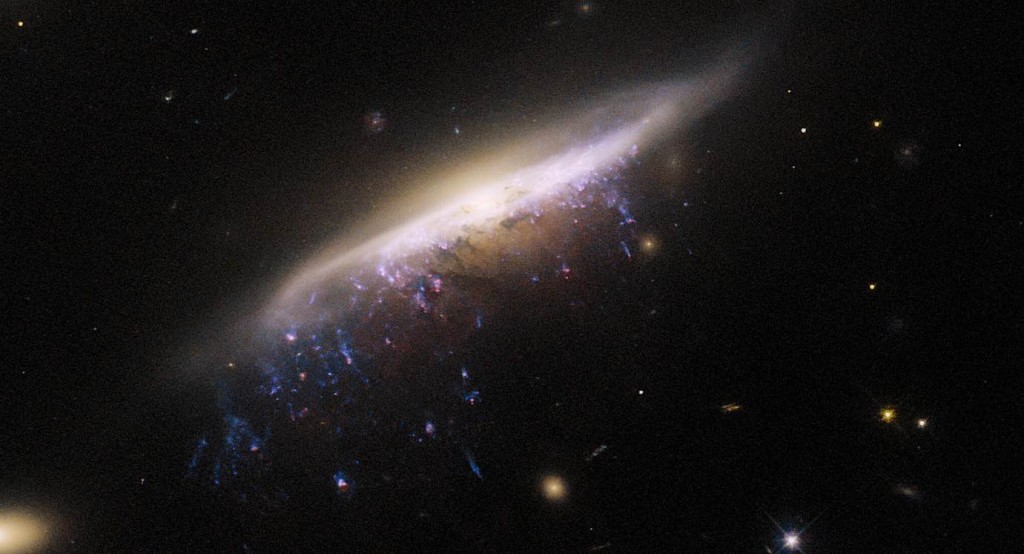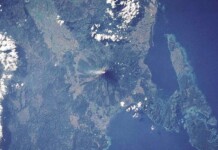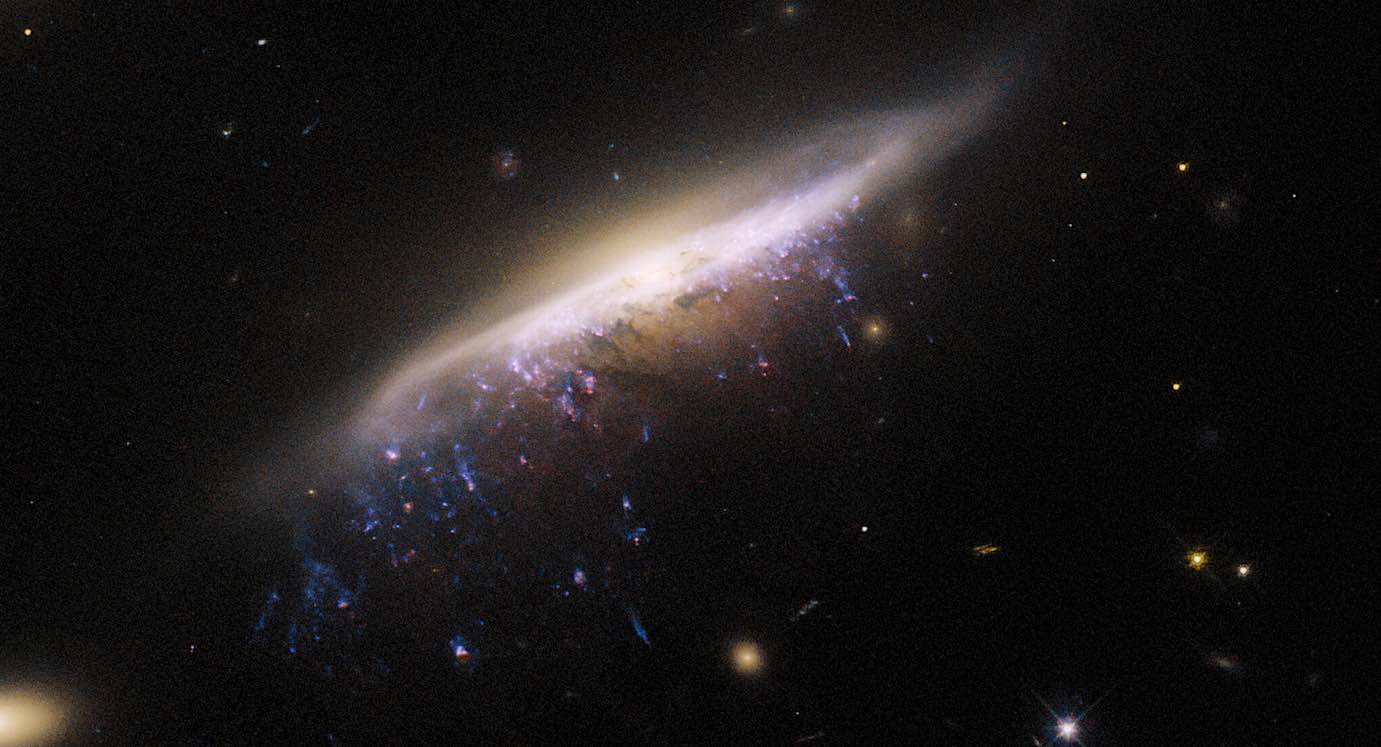
Like the ancients naming constellations after the animals they resembled, scientists at the European Space Agency say they have found a galactic ‘jellyfish.’
The presence of star-forming gas dripping from the disk of the galaxy JW100 in long streamers, over 800 million light-years away in the constellation Pegasus, was detected by the Hubble Space Telescope.
Comparing them to “streaks of fresh paint”, an ESA spokesperson says they point to a process called ram pressure stripping, which the view from Hubble shows as resembling “dangling jellyfish tentacles.”
Ram pressure stripping occurs when galaxies encounter the diffuse gas that pervades galaxy clusters.
“As galaxies plow through this tenuous gas, it acts like a headwind, stripping gas and dust from the galaxy and creating the trailing streamers that prominently adorn JW100,” ESA said in a statement.
ESA said the other bright elliptical patches in the Hubble image are other galaxies in the cluster that hosts JW100.
MORE GREAT SPACE IMAGERY: New Webb Image Captures Clearest View of Neptune’s Rings, Revealing the Ice Giant in Whole New Light
“This observation took advantage of Hubble’s Wide Field Camera 3 and its capabilities. The data is part of a sequence of observations designed to explore star formation in the tendrils of jellyfish galaxies.”
“These tendrils represent star formation under extreme conditions and could help astronomers better understand the process of star formation elsewhere in the universe.”
GOOD OLD HUBBLE: Hubble Captures Rare Event: Star Eaten By a Black Hole 300 Million Light Years Away (LOOK)
Launched more than 20 years ago, the Hubble Space Telescope is still in good working order thanks to its placement in Earth’s orbit. Engineers are able to launch into space in order to make repairs on the telescope, meaning it has the ability to continue its service for decades to come.
SHARE This Picture With Your Friends On Social Media…




















